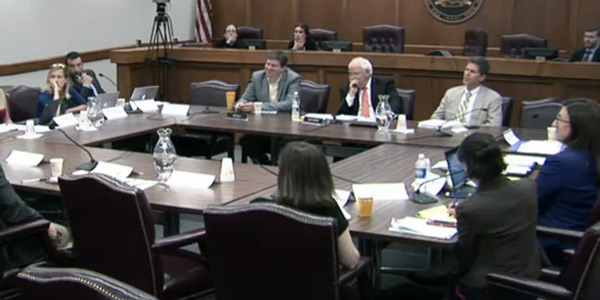By Michael Kuser
ALBANY, N.Y. — Regulatory oversight of distributed energy resources is better fully mapped out at the beginning of the process rather than built piecemeal, more than a dozen industry stakeholders told staff of the New York State Department of Public Service on Monday at the second of two technical conferences on DER oversight.
The first conference was held June 12 to explore how the Public Service Commission can best regulate utilities and protect consumers through the application of uniform business practices and marketing standards in the new era of rooftop solar and residents becoming “virtual” DER providers through membership in community distributed generation programs.
“What we have done in other areas is we’ve erred on the side of being more generous in the initial phase, trying to support new markets, but then you go to try to introduce new rules [and] people go crazy,” said Erin Hogan, director of the state’s Utility Intervention Unit. “So in my mind, it almost seems better to start with a more comprehensive structure and take away, as opposed to trying to add when you’ve discovered a problem.”
The PSC in March adopted a new “value stack” pricing mechanism for solar and other DER, along with two other orders to transition utilities into “distributed system platforms” and align their incentives with DER providers. The Value of Distributed Energy Resources order approved March 9 (Case NYPSC Adopts ‘Value Stack’ Rate Structure for DER.)
Benefit of the Bargain

Scott Weiner, DPS deputy for markets and innovation, chaired the June 19 roundtable discussion and emphasized that “we’re dealing with not the purchase of bread or the repair of a car, which has its own protection, but with the provision of electricity and the opportunity of companies to enter into a marketplace, an expanded marketplace that has been created by the commission. The underlying question is, what responsibility does the commission have to make sure that end-use customers receive the benefit of the bargain that they’re agreeing to?”
“Oversight is important to build consumer confidence,” said Sara Margaret Geissler, manager of customer operations regulatory performance at Consolidated Edison. “We all want to create a market that they can have confidence in … and a core part of that is making sure, or having enough guidelines to ensure, that they understand what they’re signing and they know who to call if they have an issue.”
Geissler represented the joint utilities at the technical conference, which also include Central Hudson Gas & Electric, National Grid (which owns New York State Electric and Gas, and Rochester Gas and Electric), Orange and Rockland Utilities, and Rockland Electric.
Differentiate the Customers

Valerie Strauss, policy director at the Association for Energy Affordability, noted the importance of differentiating between residential and commercial customers — and between different levels of commercial customer.
“We need to look at this in terms of the risk to the consumer,” Strauss said. “The current proposal is a blanket [that] kind of covers everybody. … We would suggest that that be revisited and some changes made for the provisions to more reflective of the risk.”
Strauss suggested that commercial customers could be differentiated by the number of units they control: “Certainly a mom-and-pop owner who has five buildings with 10 units each is not a sophisticated [commercial and industrial] customer. A property manager who owns 100 buildings that have 100 units each probably is.”
Community DG is new in New York but not in other markets, according to Hannah Masterjohn, policy vice president at the Clean Energy Collective.
“We have pretty substantial markets in Massachusetts, in Colorado, where we’ve already got thousands of customers participating in projects,” Masterjohn said. “When we look at our experience … we find low complaints overall, and the vast majority are related to utility billing issues. When we’re talking about community solar, the customer’s paying a third-party provider, but what they’re paying for is bill credits on their utility bill, so that benefit that’s getting delivered to them, that’s where they have most challenges.”
David Sandbank, director of the New York Sun program at New York State Energy Research and Development Agency, has overseen 64,000 solar installations since 2012 and said that his program doesn’t have any oversight over community DG.
“Right now, our focus is really on system performance of the main system itself,” Sandbank said. “There’s no specific protections for community solar subscribers in New York. … We have provided a lot of customer education on our website and we’ve launched a very robust digital marketing campaign to educate potential solar customers.”
Zack Dufresne, communications director at the Alliance for Clean Energy New York, asked whether the state could afford to regulate heavily.
“These regulations will take significant resources on the part of the PSC,” he said, “and I’m wondering if starting off with this maximalist position, [will] the DPS staff have the resources in place for that?”
“Let’s not have the tail wag the dog,” Weiner said. “If we feel there are certain activities that commission staff should be engaged in, we’ll make sure we have the resources.”



